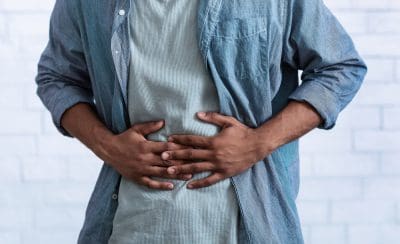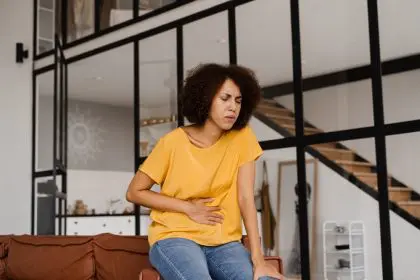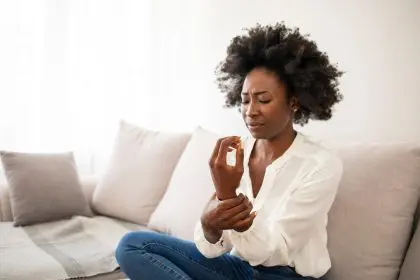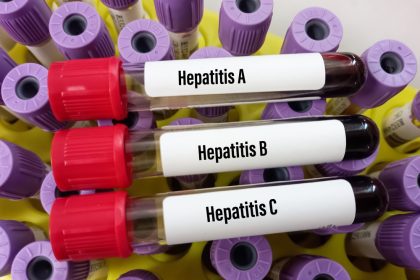Monthly menstrual pain affects millions worldwide, ranging from mild discomfort to debilitating cramps that interfere with daily activities. While over-the-counter medications offer relief for many, natural approaches can provide effective alternatives or complementary options with fewer side effects. These remedies address both the symptoms and underlying mechanisms of menstrual pain, offering holistic relief based on scientific understanding of the menstrual cycle.
1. Heat therapy for immediate relief
Heat therapy stands as perhaps the most accessible and effective natural remedy for menstrual cramping. The application of warmth to the lower abdomen works through multiple mechanisms to ease discomfort.
Heat increases blood flow to the uterine area, helping muscles relax and reducing the intensity of contractions. This increased circulation also helps flush out prostaglandins—hormone-like substances that cause inflammation and trigger the uterine contractions responsible for cramping pain.
Research indicates that continuous low-level heat therapy can be as effective as ibuprofen for some women. Heat can be applied through:
Heating pads placed on the lower abdomen or lower back Warm baths that immerse the pelvic area Reusable heat patches designed for menstrual pain Hot water bottles wrapped in a thin towel
For optimal results, apply heat for 15-30 minutes at a time. Many find alternating between abdominal and lower back application provides comprehensive relief, as pain often radiates between these areas during menstruation.
2. Anti-inflammatory herbs with research backing
Certain herbs contain natural compounds that help reduce inflammation and relax the uterine muscles, addressing both primary causes of menstrual pain.
Ginger stands out for its well-documented anti-inflammatory properties. Regular consumption of ginger in the days leading up to and during menstruation has been shown to reduce both the intensity and duration of pain. The active compounds in ginger, including gingerols and shogaols, inhibit the production of prostaglandins and reduce inflammation.
Consuming 1-2 grams of ginger daily during menstruation provides noticeable benefits for many women. This can be achieved through:
Fresh ginger tea (steeping 1-2 teaspoons of grated ginger in hot water) Ginger added to meals High-quality ginger supplements
Cinnamon represents another beneficial herb with compounds that help reduce uterine contractions and decrease inflammation. Studies suggest that consuming 1-2 grams of cinnamon daily during the first three days of menstruation can significantly reduce pain severity.
Fennel seeds contain anethole, a compound with antispasmodic properties that helps relax the uterine muscles. Drinking fennel tea twice daily during menstruation has shown comparable pain-relieving effects to non-steroidal anti-inflammatory drugs in some research.
3. Essential fatty acids that modulate inflammation
Dietary fats play a crucial role in regulating the body’s inflammatory responses, including those occurring during menstruation. Increasing consumption of omega-3 fatty acids while reducing omega-6 fatty acids can create a more balanced inflammatory environment.
Omega-3 fatty acids found in fatty fish (salmon, mackerel, sardines), walnuts, flaxseeds, and chia seeds help reduce the production of inflammatory prostaglandins. Women who consume higher amounts of these foods report less menstrual pain intensity.
For those experiencing significant menstrual discomfort, increasing omega-3 consumption throughout the month proves more effective than only during menstruation. The anti-inflammatory effects build over time, creating cumulative benefits with consistent consumption.
Concurrently reducing foods high in omega-6 fatty acids, such as processed vegetable oils, fried foods, and many packaged snacks, helps establish a healthier inflammatory balance. This dietary shift doesn’t eliminate menstrual pain immediately but creates long-term improvements in pain patterns when maintained over several months.
4. Magnesium supplementation for muscle relaxation
Magnesium deficiency affects a substantial portion of the population and contributes to increased muscle tension and cramping. This essential mineral plays a crucial role in muscle relaxation and nervous system regulation.
Research demonstrates that magnesium supplementation can reduce both the severity and duration of menstrual cramps for many women. It works by:
Relaxing the smooth muscles of the uterus Reducing the production of prostaglandins Modulating pain perception through its effects on neurotransmitters
Supplementing with 300-600 mg of magnesium daily, particularly in the form of magnesium glycinate or magnesium citrate for better absorption, provides benefits for many women. Starting supplementation about two weeks before the expected period often yields better results than beginning during menstruation.
Dietary sources of magnesium include dark leafy greens, nuts, seeds, whole grains, and dark chocolate. However, supplementation often proves necessary to reach therapeutic levels for menstrual pain relief.
5. Specific movement patterns to ease tension
While intense exercise might exacerbate cramps during heavy flow days, specific gentle movements can provide significant relief by improving circulation, releasing endorphins, and reducing muscle tension.
Yoga poses that focus on the pelvic region increase blood flow to the area while stretching tense muscles. Poses particularly beneficial for menstrual discomfort include:
Child’s pose, which gently stretches the lower back Cat-cow alternations that increase spinal flexibility and release tension Reclined bound angle pose that opens the hips and promotes relaxation Supine twists that massage the abdominal organs
Walking at a moderate pace for 20-30 minutes increases circulation without overtaxing the body. The rhythmic movement helps release tension while the mild exertion triggers endorphin release, the body’s natural pain relievers.
Pelvic floor relaxation exercises help reduce the muscle tension that often contributes to menstrual pain. Learning to consciously relax these muscles can provide immediate relief during painful episodes.
6. Acupressure techniques for accessible pain management
Acupressure applies the principles of traditional Chinese medicine in an accessible format that can be self-administered. This technique involves applying firm pressure to specific points on the body that correspond to pain relief pathways.
The Spleen 6 (SP6) point, located four finger-widths above the inner ankle bone, has shown particular efficacy for menstrual pain when firm pressure is applied for 5-10 minutes on each leg.
The Liver 3 (LV3) point, found in the web between the big toe and second toe, helps regulate energy flow and reduce pain when stimulated for 2-3 minutes on each foot.
The Conception Vessel 6 (CV6), located two finger-widths below the navel, helps ease abdominal cramping when gentle circular pressure is applied for 1-2 minutes.
These techniques can be performed multiple times throughout the day, with benefits often felt within minutes of application. Unlike medication, there’s no limit to how frequently acupressure can be used, making it a flexible option for managing pain fluctuations.
7. Anti-inflammatory dietary patterns
Beyond specific nutrients, overall dietary patterns significantly impact menstrual pain. Diets high in inflammatory foods exacerbate cramping, while anti-inflammatory eating approaches reduce pain over time.
Foods to emphasize during the menstrual cycle and throughout the month include:
Colorful fruits and vegetables rich in antioxidants that combat inflammation Whole grains that provide B vitamins necessary for muscle function Legumes that offer plant-based protein without inflammatory properties Water-rich foods that support hydration and reduce bloating
Foods to minimize, particularly in the days before and during menstruation:
High-sodium processed foods that increase water retention and bloating Caffeine, which can constrict blood vessels and increase tension Alcohol, which depletes B vitamins and disrupts hormone metabolism Sugar and refined carbohydrates that trigger inflammatory responses
For many women, adopting an anti-inflammatory diet provides gradual improvement over several menstrual cycles, with benefits extending beyond pain reduction to include more stable energy and mood during menstruation.
These natural approaches offer effective alternatives or complements to pharmaceutical pain relief. Many women find combining several strategies—such as heat therapy with magnesium supplementation and gentle yoga—provides more comprehensive relief than any single approach.
The effectiveness of these remedies varies among individuals based on the underlying causes of menstrual pain. Women with conditions like endometriosis or fibroids may find natural remedies helpful but insufficient as standalone treatments. Persistent severe pain warrants medical evaluation to rule out underlying conditions requiring specific treatment.
For most women experiencing typical menstrual discomfort, these evidence-based natural approaches offer significant relief without unwanted side effects. By addressing both the symptoms and underlying mechanisms of menstrual pain, these remedies provide holistic support during a challenging phase of the monthly cycle.
When implementing these approaches, patience proves important—many natural remedies build effectiveness over several menstrual cycles as the body responds to consistent support. Tracking symptoms while introducing remedies helps identify which approaches provide the most benefit for your unique pattern of menstrual discomfort.


















